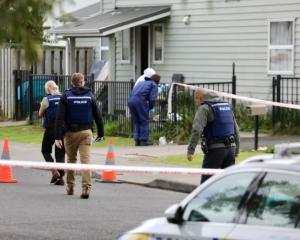Some Christchurch buildings may be regarded as "uninsurable" or the premiums set for them may be too costly for their owners, says a senior engineer involved in the reconstruction of Christchurch.
Structural Engineering Society president John Hare, a director of the Holmes consulting group, said today that he would "certainly expect" insurance companies to be more selective in future about which buildings they would insure.
"I would certainly be expecting that some of the buildings at the lower end of the scale - certainly earthquake-prone buildings, but other buildings of types shown to be prone to damage - may not be insurable, or may be prohibitively expensive to insure," said Mr Hare, who is a principal engineering adviser to Canterbury Earthquake Recovery Authority (Cera).
He was speaking at the release of a paper from science academy the Royal Society and other science and engineering bodies on what the earthquake damage to Christchurch buildings meant for building future building designs.
Engineers have been studying damage to commercial buildings, homes and other structures to work out what types of structural design, building strengthening techniques and construction methods led to the most resilient behaviour, and the causes of failures, including buildings which had suffered loadings greater than those for which they had been designed.
The Government is later expected to make a decision on whether the design levels in the current building code represent the risk appetite of the New Zealand public and balance that against building and occupancy costs.
Asked whether better design standards would overcome insurance company reluctance to insure some homes built in the quake zone, Mr Hare said: "We're probably about to enter a new phase with insurance".
In California, many residential homeowners did not have insurance because of the high cost of premiums, and because the excess they would have to cover on a claim was high.
About 13 percent had earthquake insurance in the state, which was hit by the magnitude 6.7 Northridge earthquake in 1994, and the 7.1 magnitude Loma Prieta tremor that shook the San Francisco Bay area five years earlier.
"It is important that owners and engineers are paying attention to that and doing what they can to ensure that homes, offices and buildings are as safe as they can be.
"Sometimes a little bit of prudent work to upgrade a building will save them a awful lot of pain further down the track, should we have another event."
New home buyers in the Canterbury region have reported problems in obtaining mortgages because all the major insurance companies were refusing to issue new policies in Christchurch, as well as the Waimakariri, Selwyn, Hurunui and Ashburton districts.
State, AMI, NZI and Tower Insurance placed bans on home and contents cover for new customers, following the February 22 and June 13 aftershocks, and a Canterbury real estate agent, Richard Peter, said it had been difficult for some people to get insurance. Some buyers were taking over the policy held by the vendor.
The Insurance Council said it was normal for companies to remove cover for a period of time after each major quake and some would lift the ban in coming weeks.












